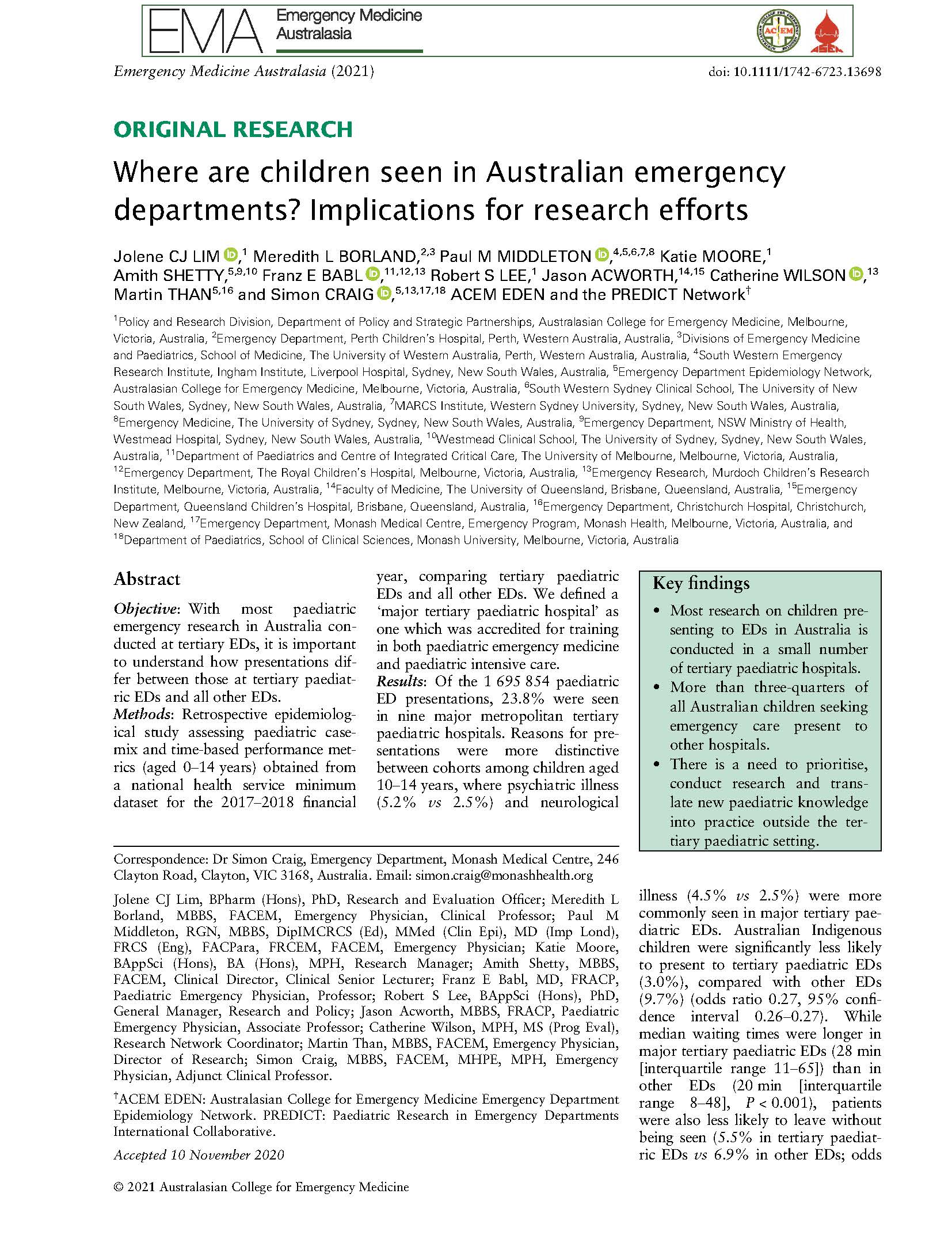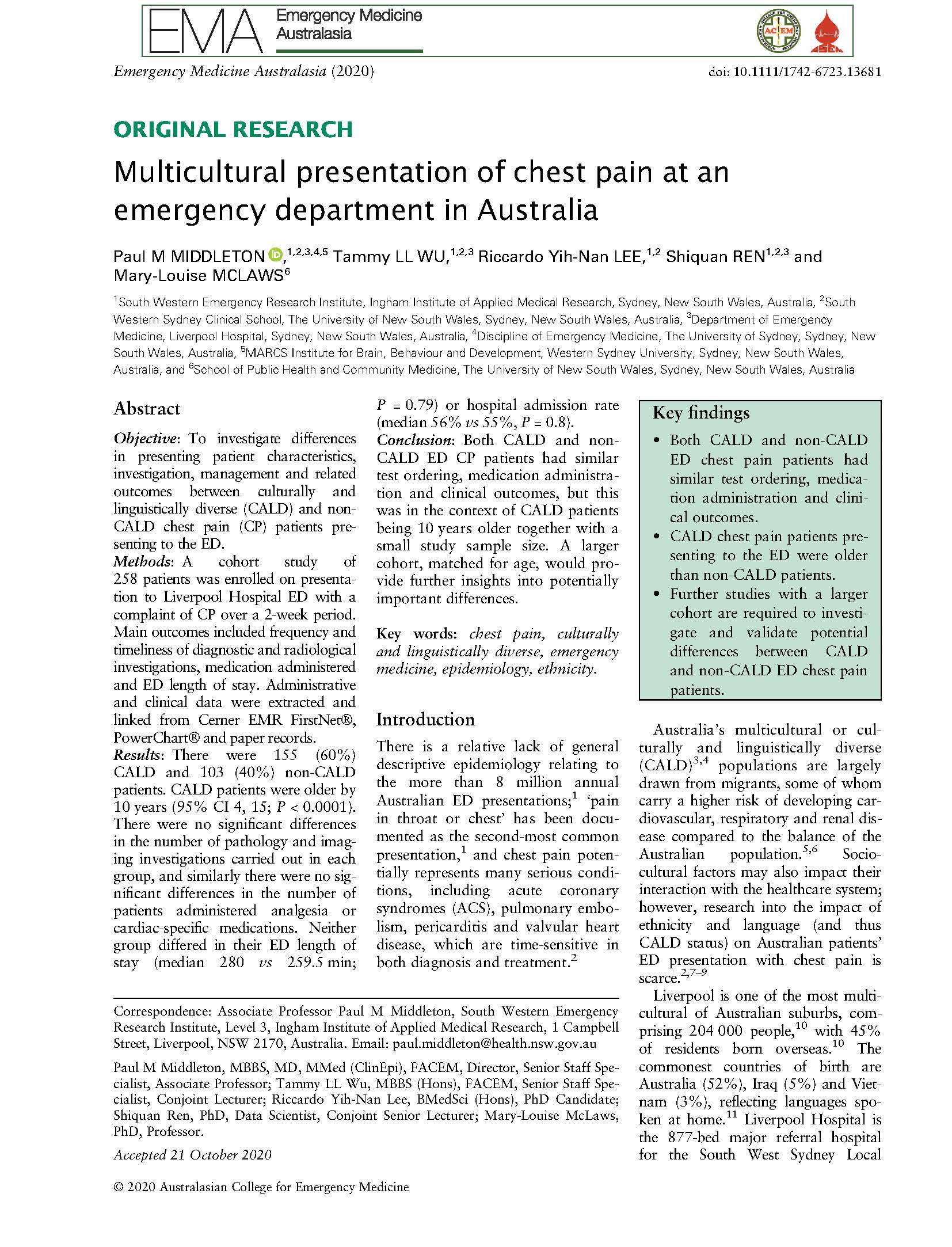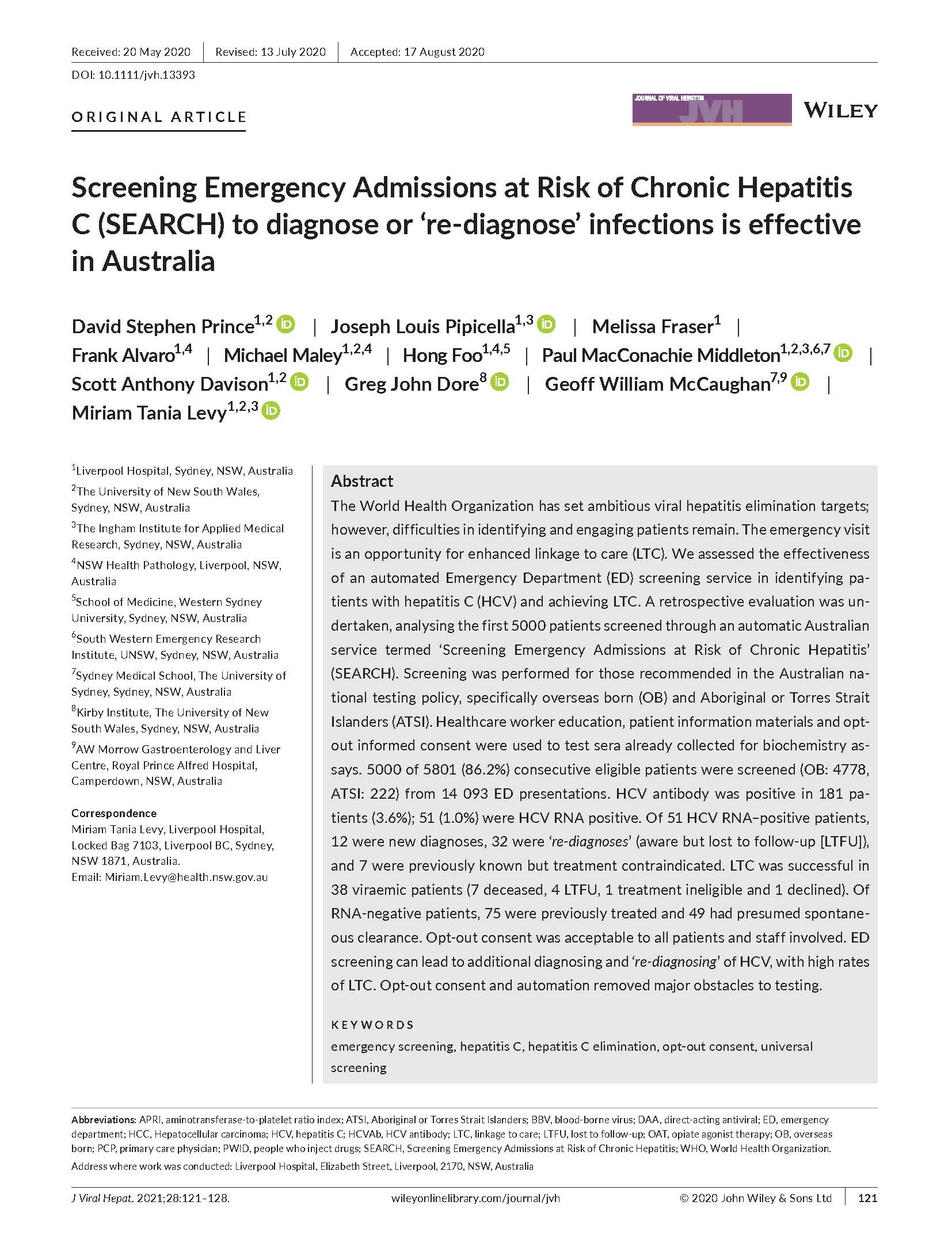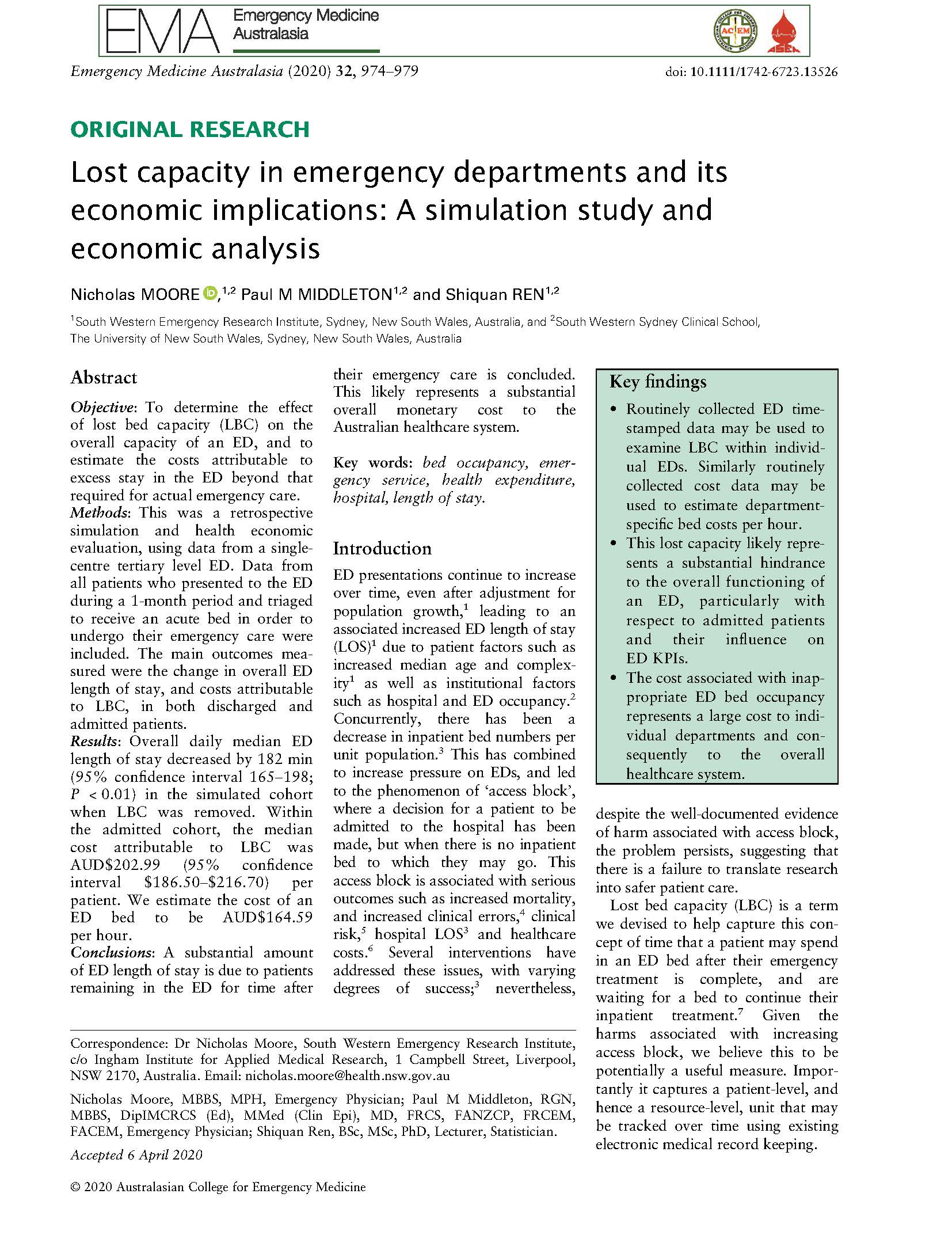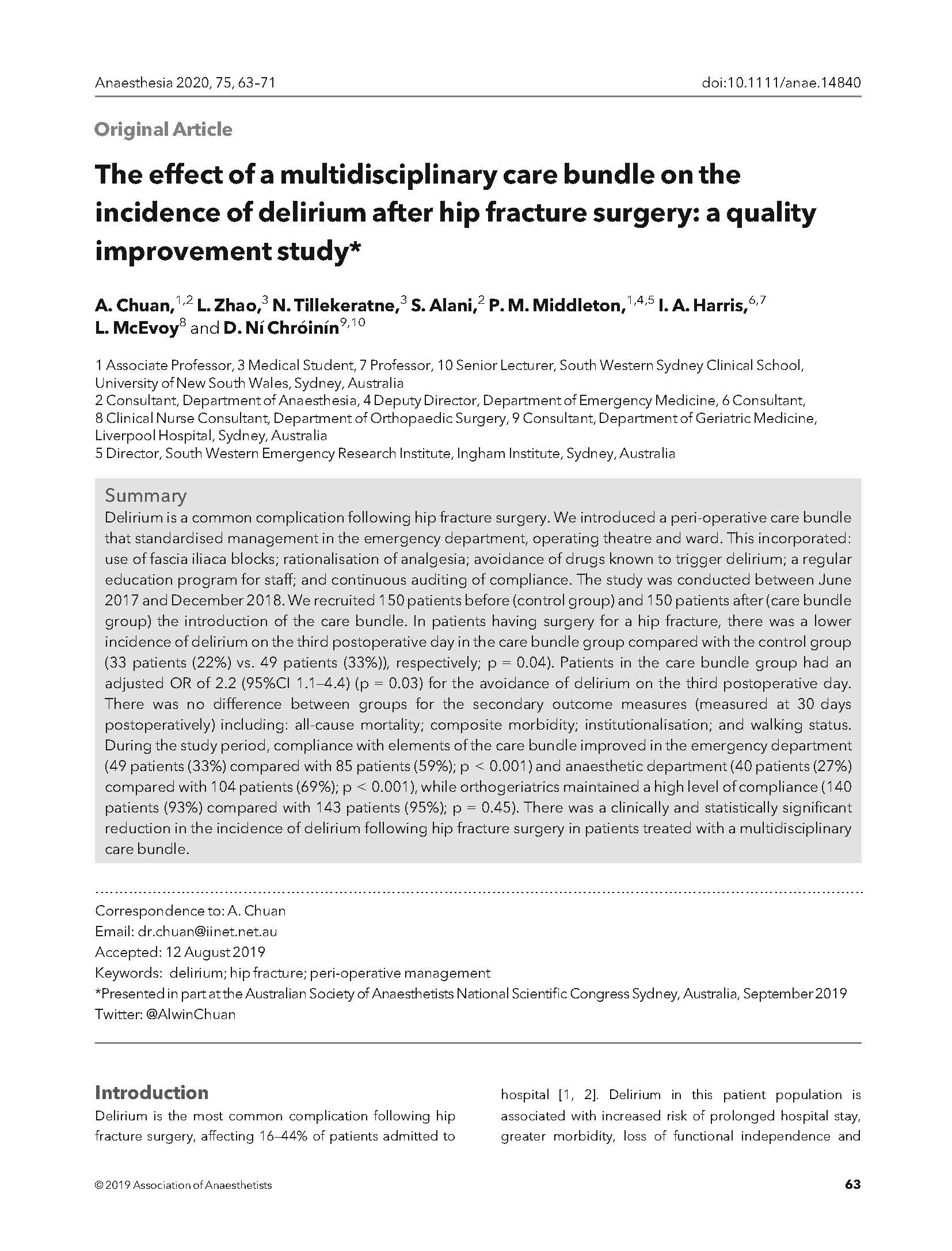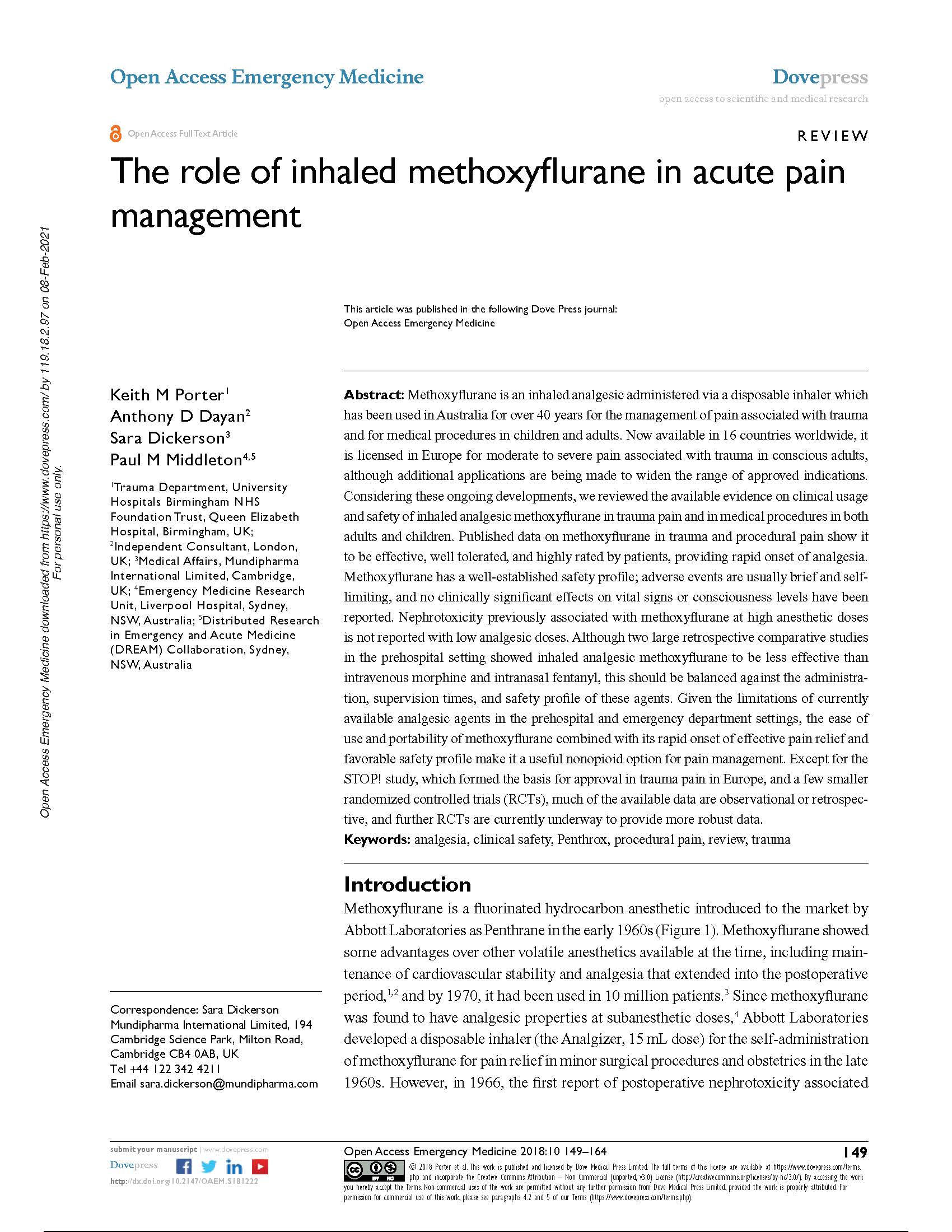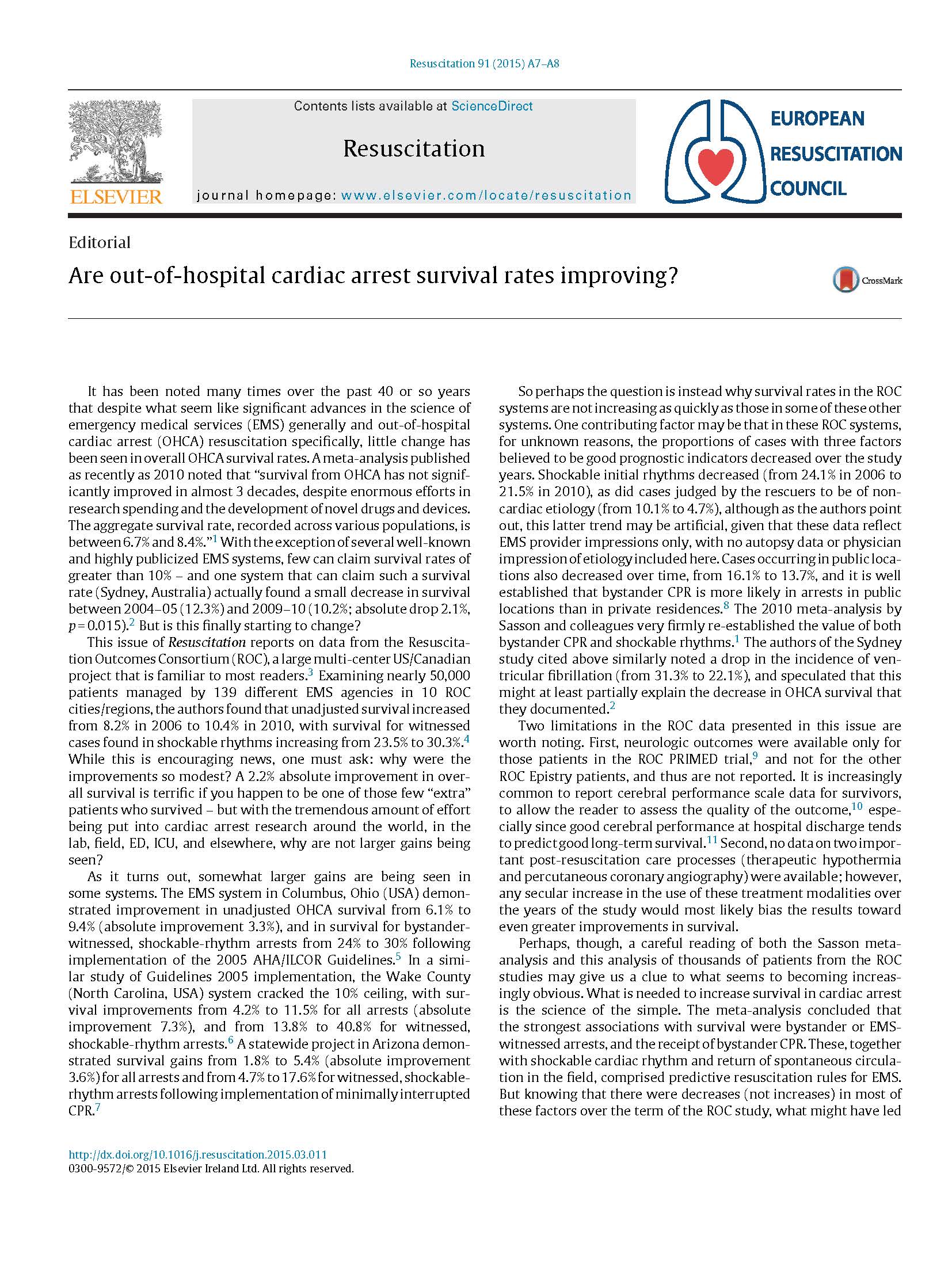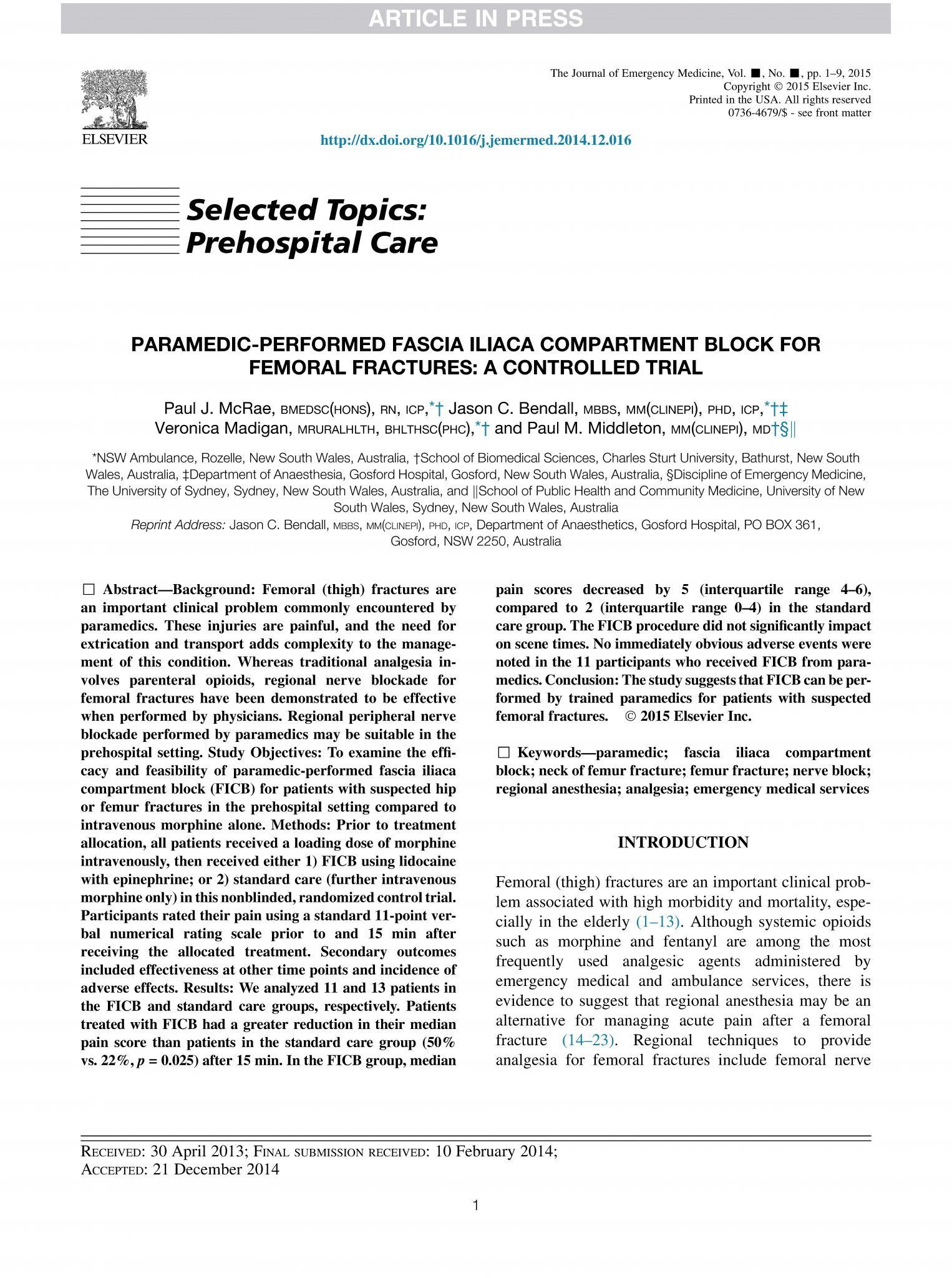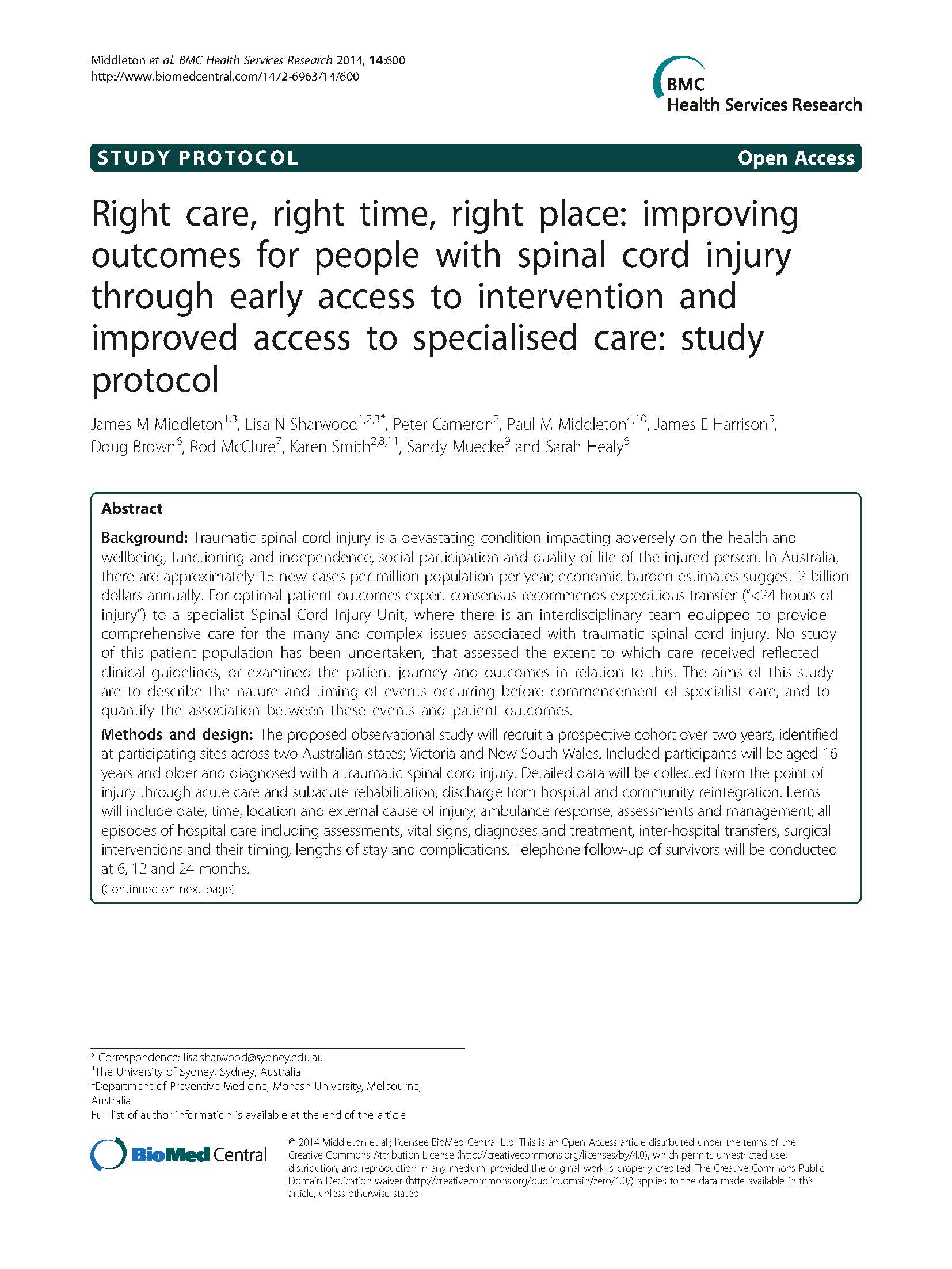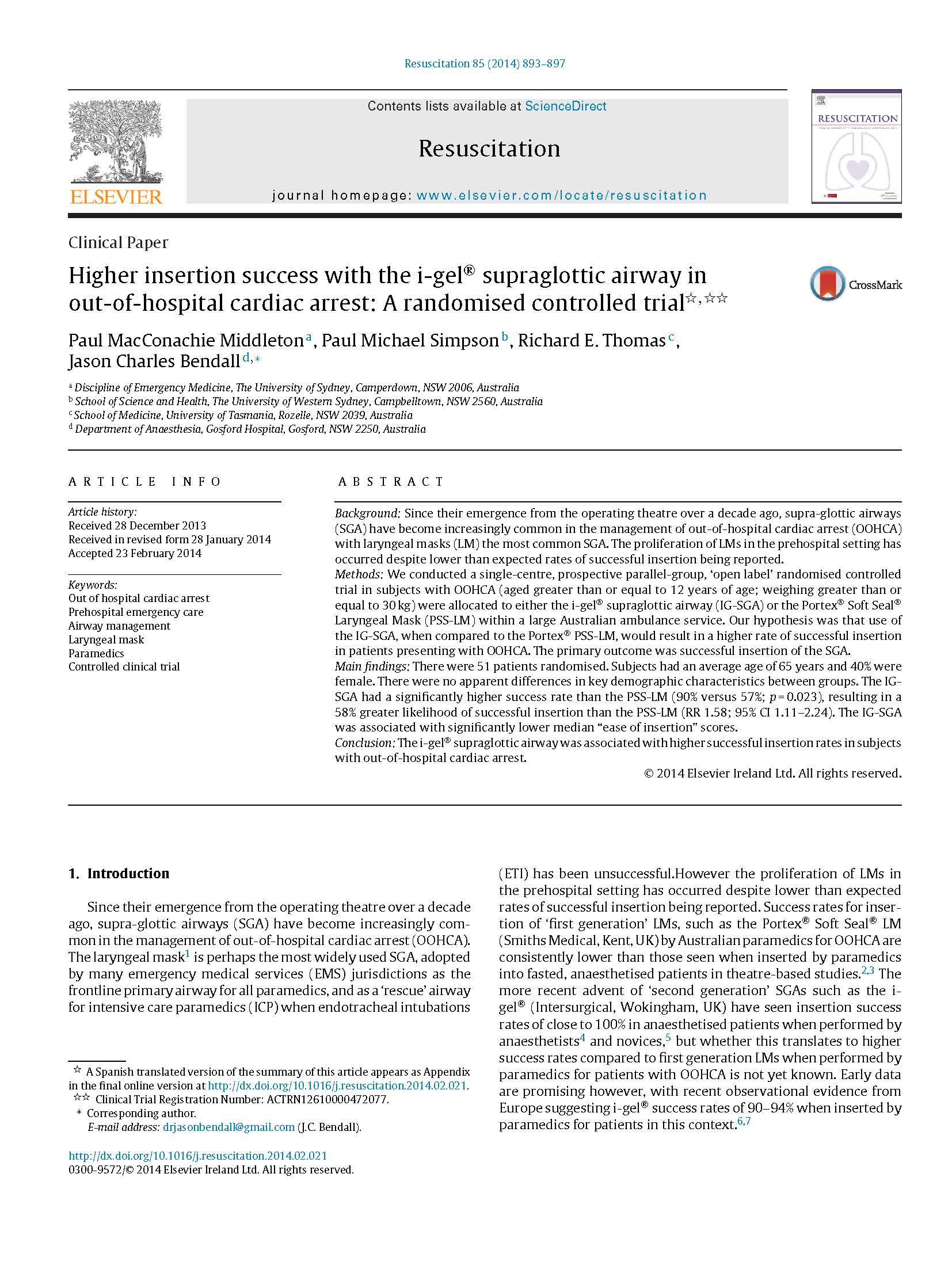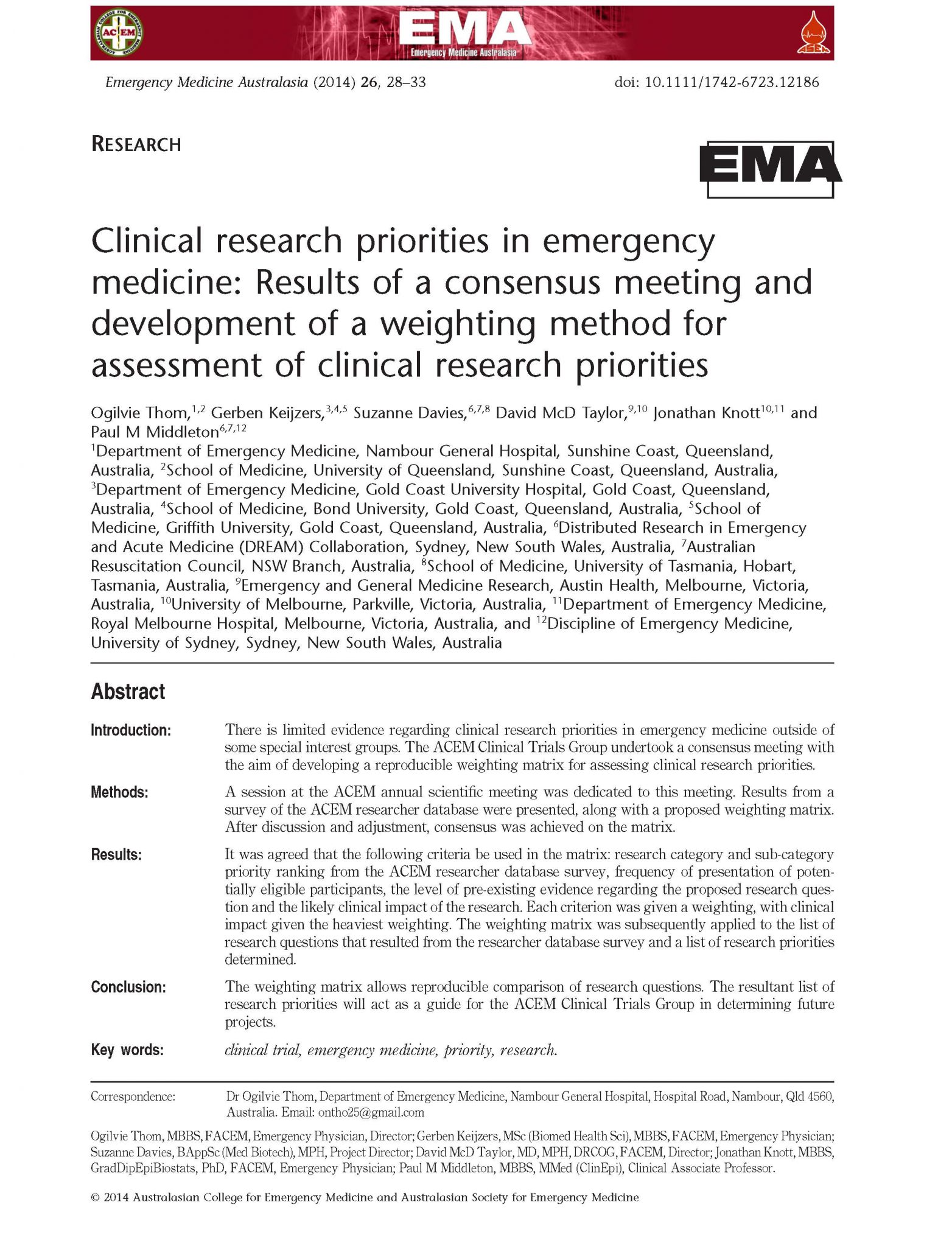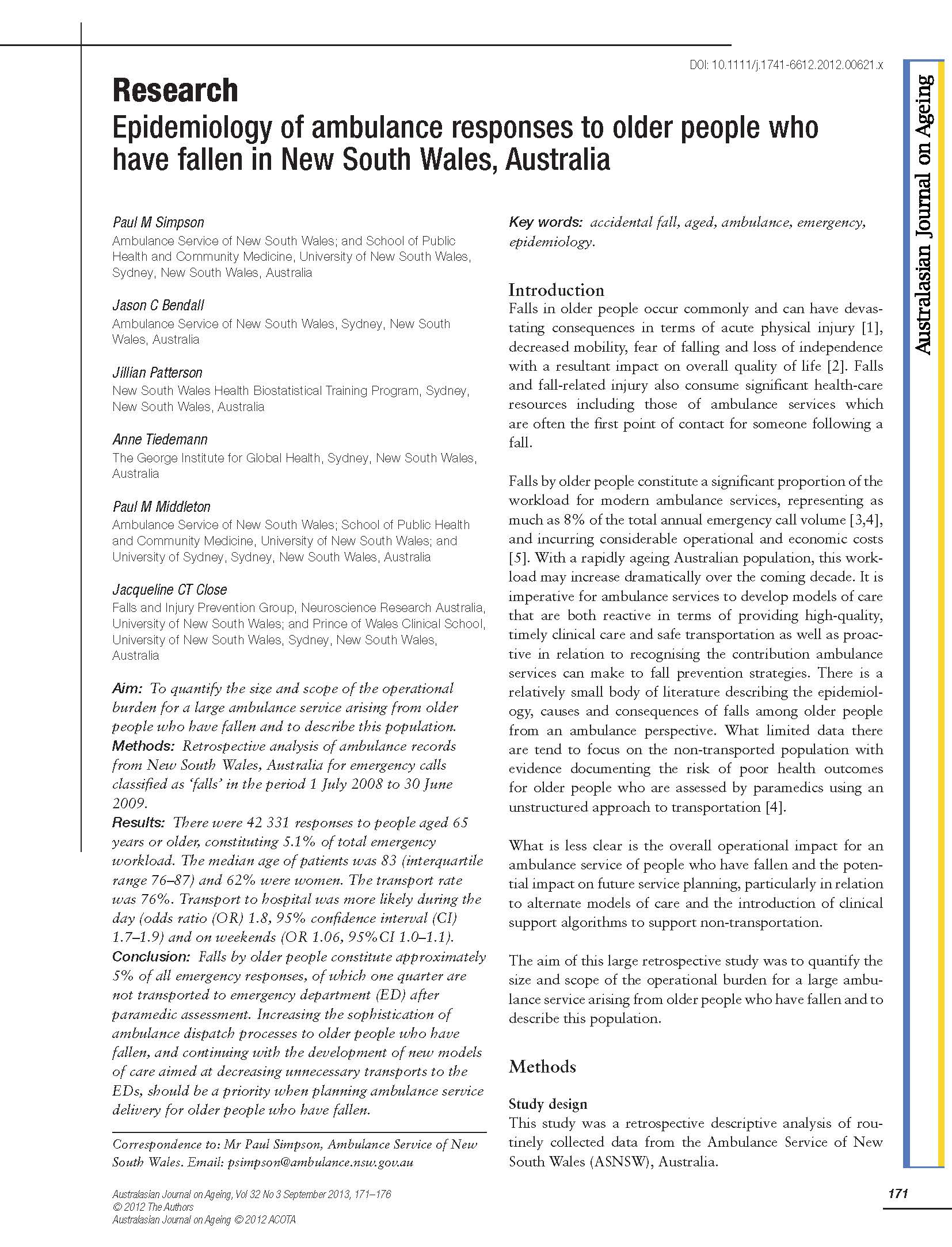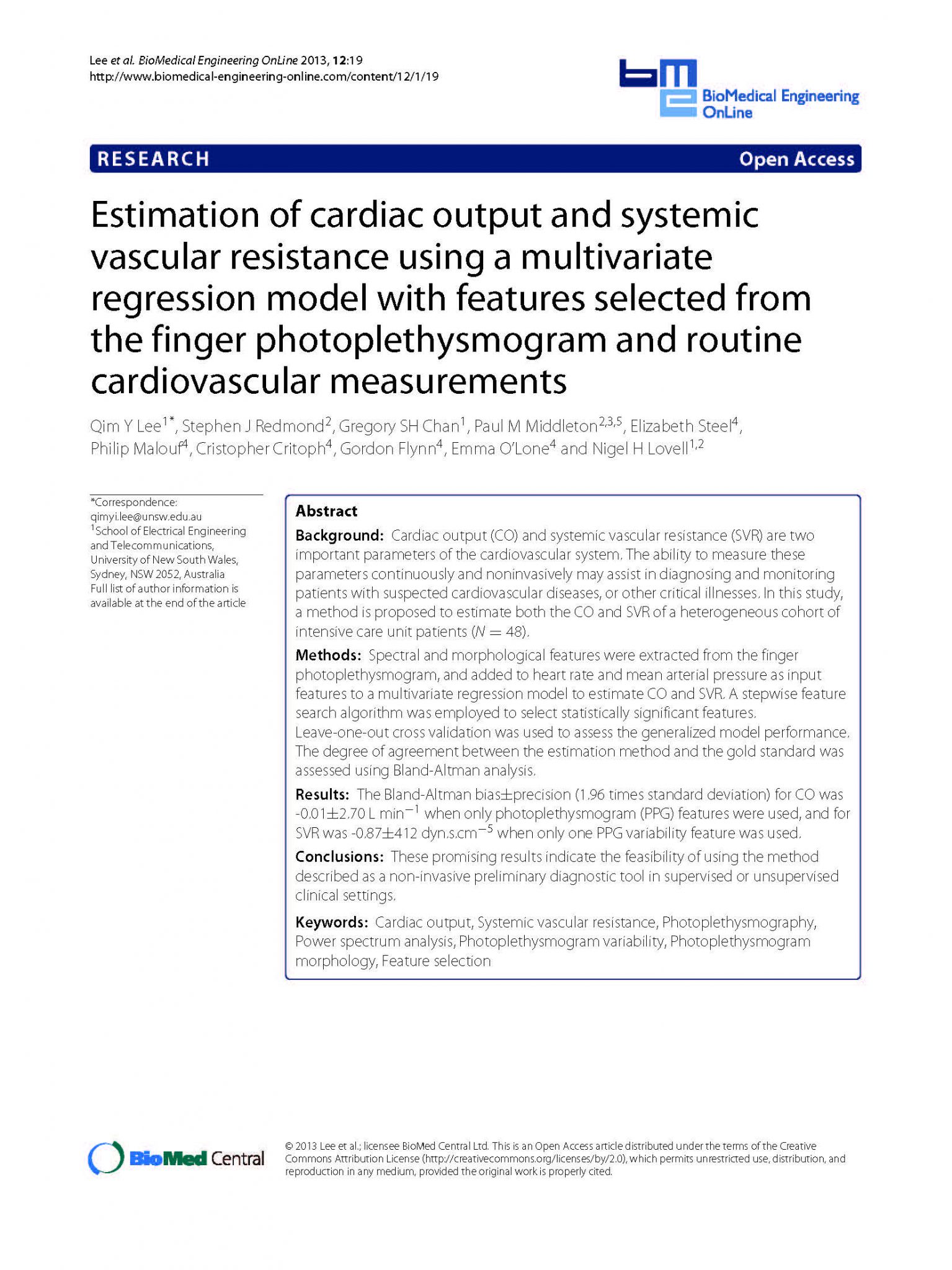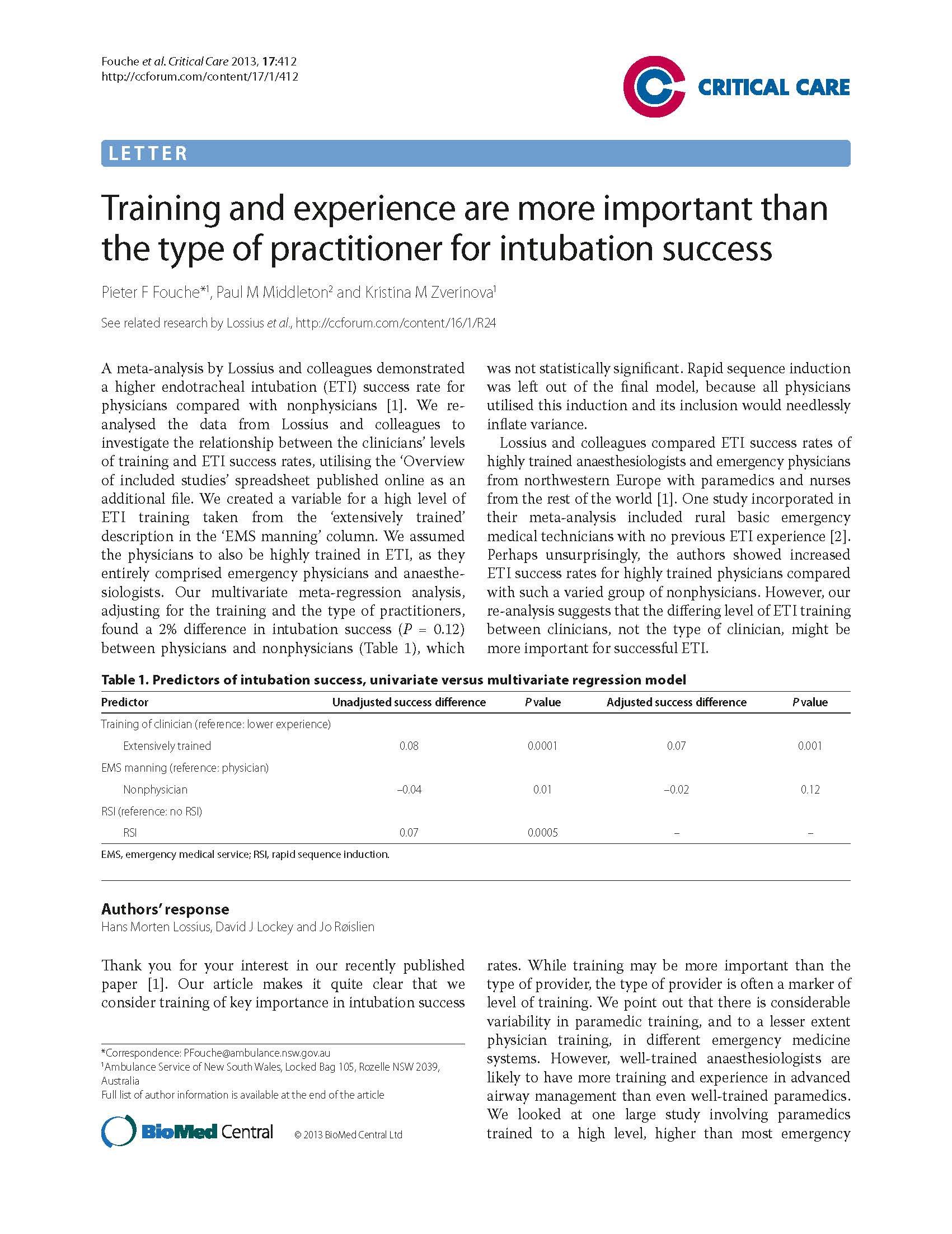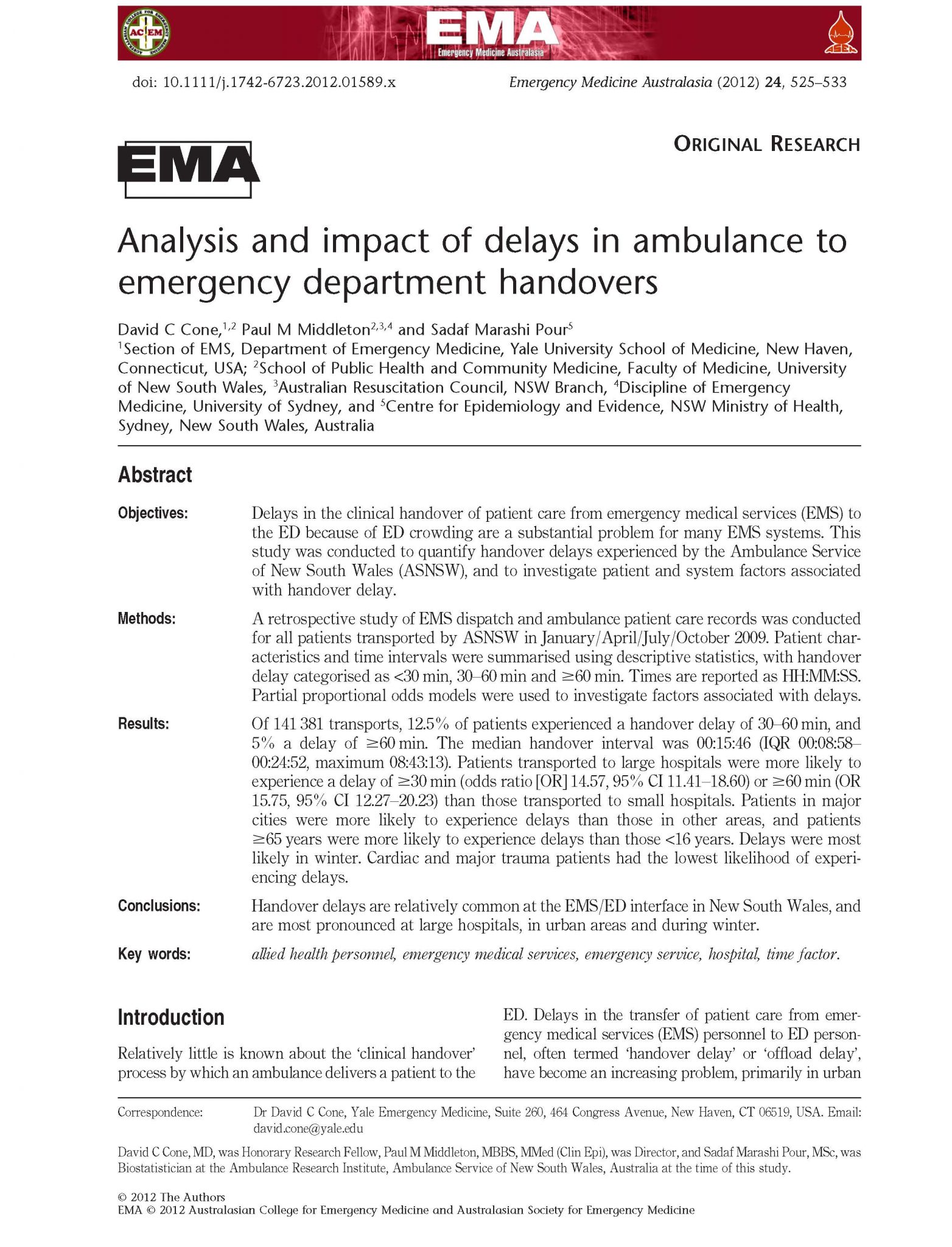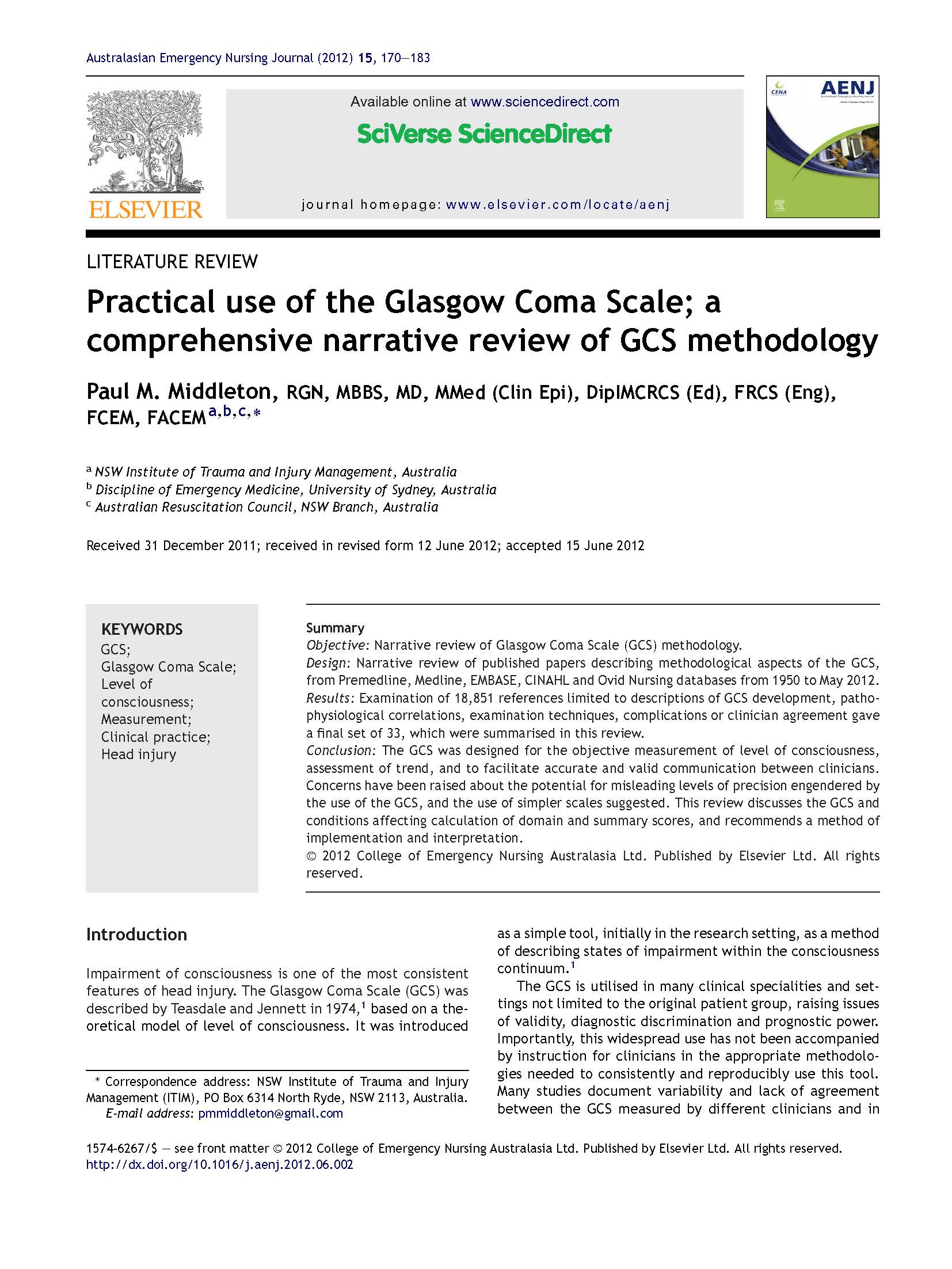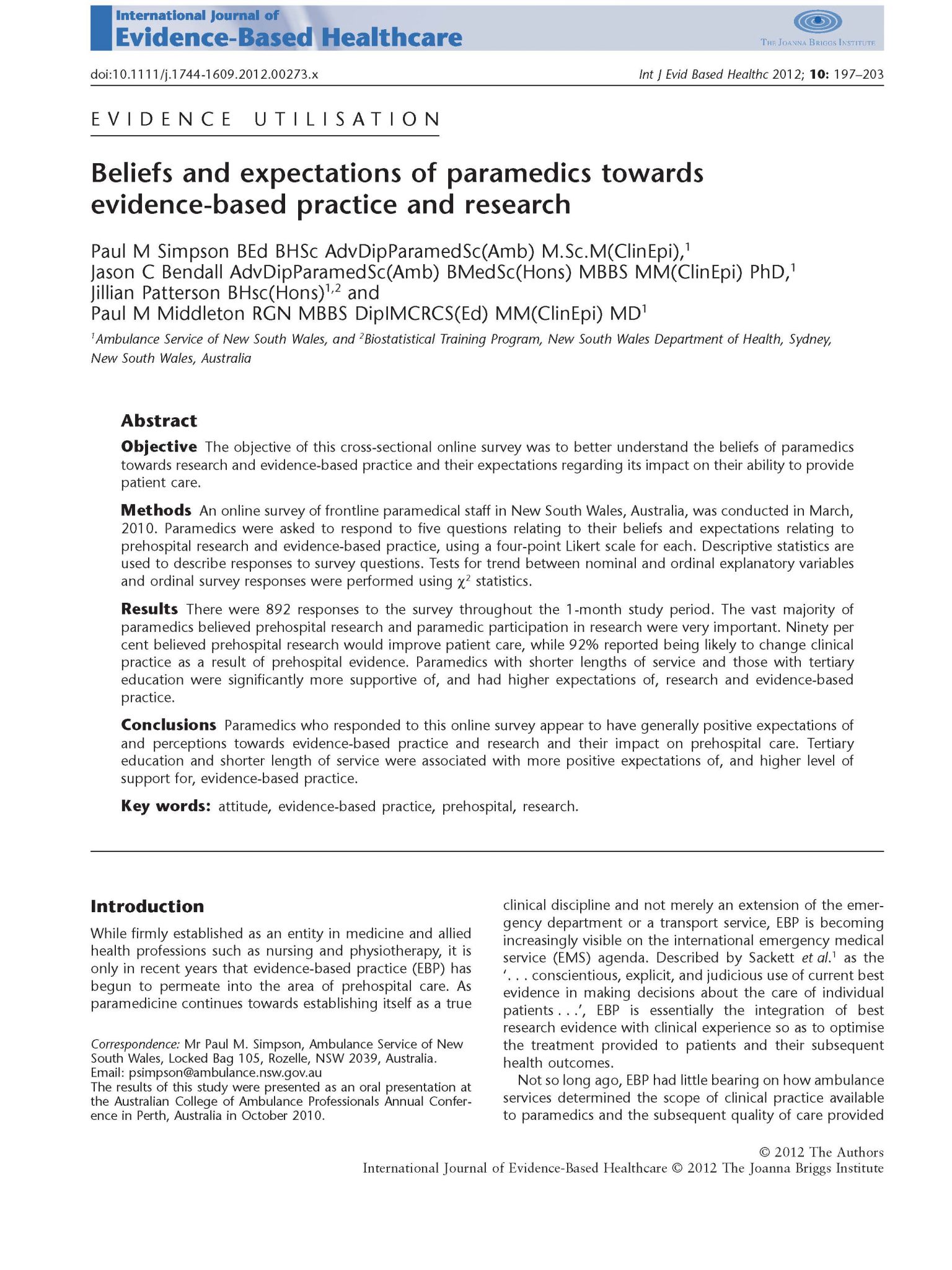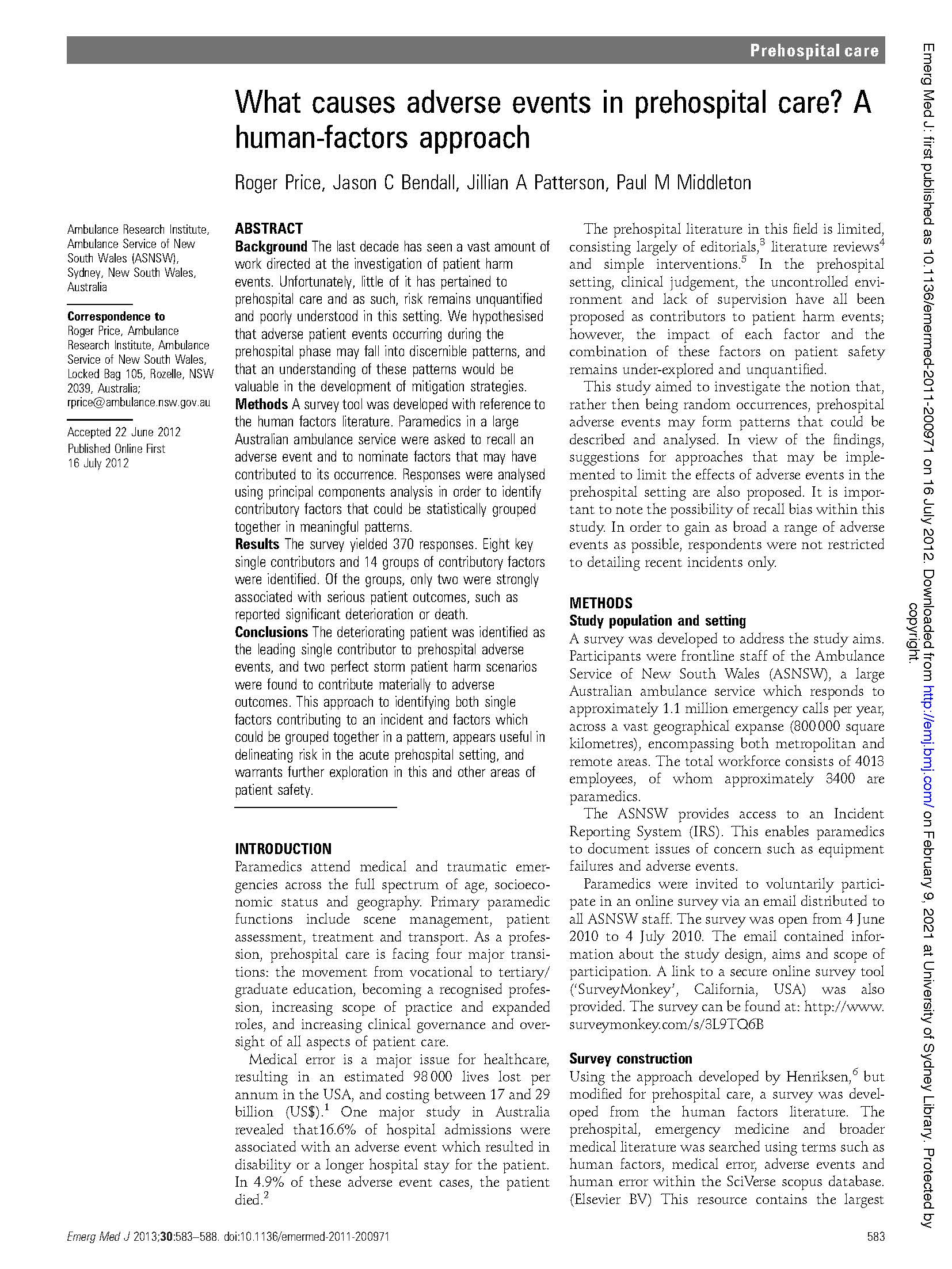Publications by SWERI researchers
“The study identified key areas of difference in paediatric presentations between tertiary paediatric EDs and other EDs. It is vital to broaden paediatric ED research beyond tertiary paediatric centres, to ensure relevance and generalisability.”
“Both CALD and non-CALD ED CP patients had similar test ordering, medication administration and clinical outcomes, but this was in the context of CALD patients being 10 years older, together with a small study sample size.”
“A considerable proportion of ED length of stay is because of patients remaining in an ED bed after their emergency care is concluded. Absolute time is much greater for admitted patients than for discharged patients…”
“HCV antibody was positive in 181 patients (3.6%); 51 (1.0%) were HCV RNA positive. Of 51 HCV RNA–positive patients, 12 were new diagnoses, 32 were ‘re-diagnoses’ (aware but lost to follow-up), and 7 were previously known but treatment contraindicated.”
“Similarly routinely collected cost data may be used to estimate department specific bed costs per hour. The cost associated with inappropriate ED bed occupancy represents a large cost to individual departments and consequently to the overall healthcare system.”
“We introduced a peri-operative care bundle that standardised management in the ED, OT and ward. In patients having surgery for a hip fracture, there was a lower incidence of delirium on the third postoperative day in the care bundle group compared with the control group.”
“Given the limitations of currently available analgesic agents in the prehospital and ED settings, the ease of use and portability of methoxyflurane, combined with its rapid onset of effective pain relief and favourable safety profile make it a useful non-opioid option for pain management.”
“We introduced a peri-operative care bundle that standardised management in the ED, OT and ward. In patients having surgery for a hip fracture, there was a lower incidence of delirium on the third postoperative day in the care bundle group compared with the control group.”
“The message seems to be that OHCA research and survival improvement has to be holistic, inclusive, and based in the society of which the EMS is only one part, and that true and lasting improvement relies on us convincing our communities across the world that OHCA resuscitation is their job as much as ours.”
“Patients treated with FICB had a greater reduction in their median pain score than patients in the standard care group (50% vs 22%, p = 0.025) after 15 min. In the FICB group, median pain scores decreased by 5 compared to 2 in the standard care group.”
“The proposed observational study will recruit a prospective cohort over two years, identified at participating sites across two Australian states; Victoria and New South Wales. Included participants will be aged 16 years and older and diagnosed with a traumatic spinal cord injury.”
“The iGel had a significantly higher success rate than the standard Laryngeal Mask Airway (LMA) (90% versus 57%; p = 0.023), resulting in a 58% greater likelihood of successful insertion than the LMA (RR 1.58; 95% CI 1.11–2.24). The iGel was associated with significantly lower median “ease of insertion” scores.”
“A weighting matrix including research category, priority ranking, frequency of presentation, pre-existing evidence and clinical impact of the research. allows reproducible comparison of research questions.”
“Falls by older people constitute approximately 5% of all emergency responses, of which one quarter are not transported to emergency department (ED) after paramedic assessment.”
“Spectral + morphological features from the finger photoplethysmogram were added to HR and MAP as inputs to a multivariate regression model to estimate CO and SVR. The results indicate the feasibility of using the method as a non-invasive preliminary diagnostic tool in supervised or unsupervised clinical settings.”
“…the authors showed increased ETI success rates for highly trained physicians compared with such a varied group of nonphysicians. However, our re-analysis suggests that the differing level of ETI training between clinicians, not the type of clinician, might be more important for successful ETI.”
“Early recognition, appropriate prehospital management, triage, timely and appropriate interfacility transfers of all SCI patients are critical for access to specialised care and reducing preventable complications. Elderly fallers present particular challenges to early identification.”
“Of 141,381 transports, 12.5% of patients experienced a handover delay of 30–60 min, and 5% a delay of 60 min. Patients transported to large hospitals were more likely to experience a delay of >30 min (OR 14.57) or >60 min (OR 15.75) than those transported to small hospitals.”
“Concerns have been raised about the potential for misleading levels of precision engendered by the use of the GCS, and the use of simpler scales suggested. This review discusses the GCS and conditions affecting calculation of domain and summary scores, and recommends a method of implementation and interpretation.”
“Paramedics who responded appear to have positive expectations of and perceptions towards evidence-based practice and research. Tertiary education and shorter length of service were associated with more positive expectations of, and higher level of support for, evidence-based practice.”
“This approach to identifying both single factors contributing to an incident and factors which could be grouped together in a pattern, appears useful in delineating risk in the acute prehospital setting, and warrants further exploration in this and other areas of patient safety.”
“Paramedics who responded appear to have positive expectations of and perceptions towards evidence-based practice and research. Tertiary education and shorter length of service were associated with more positive expectations of, and higher level of support for, evidence-based practice.”

